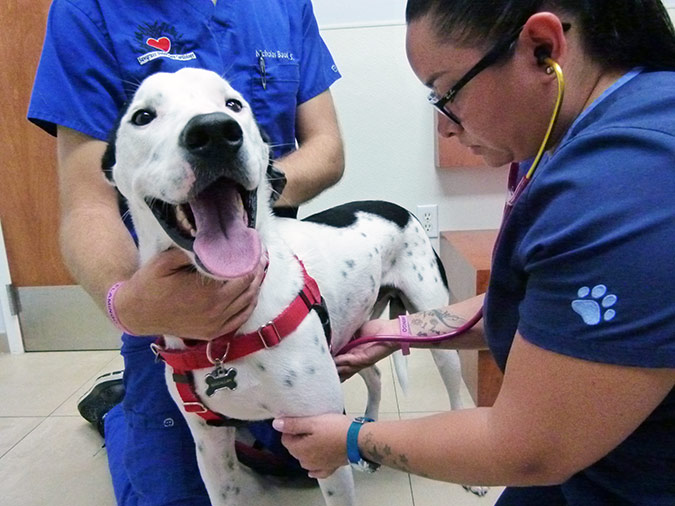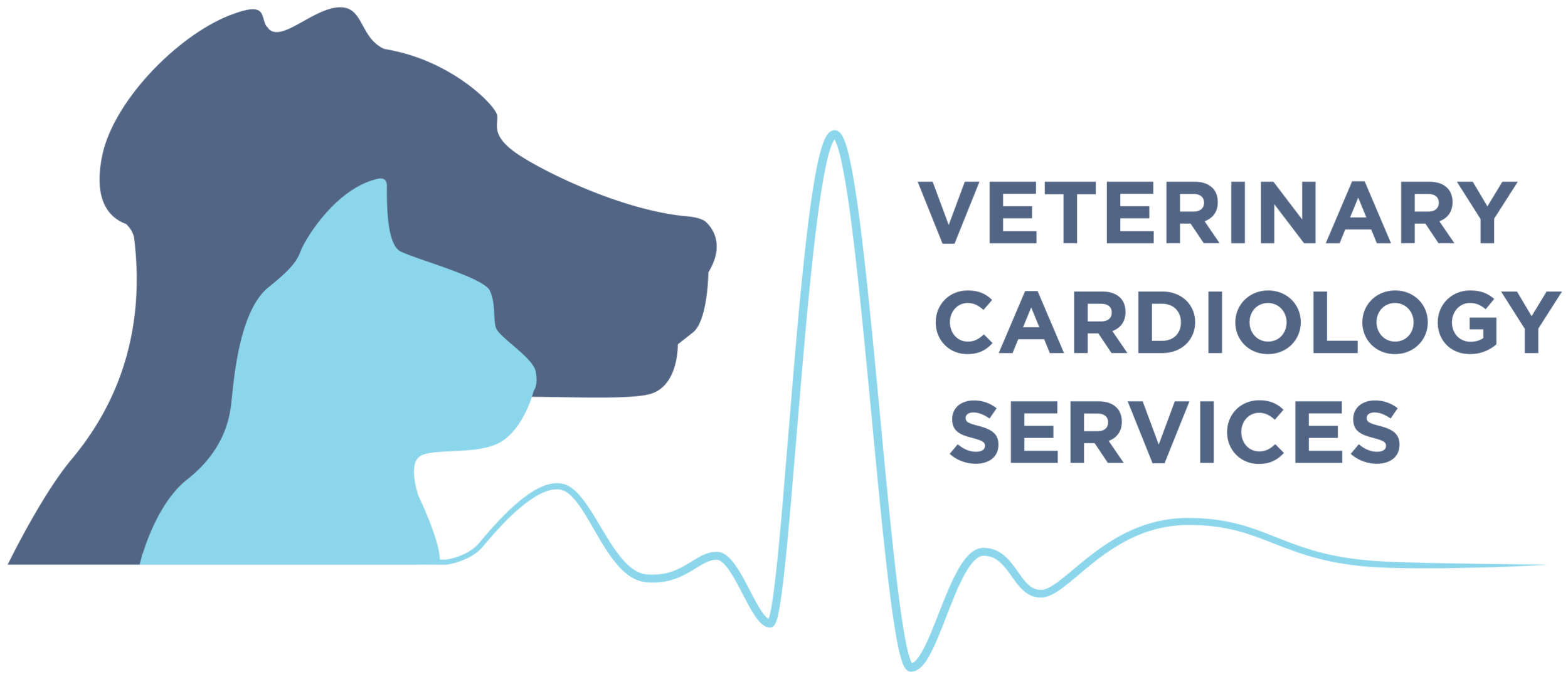The Role of a Board Certified Veterinary Cardiologist in Pet Emergency Care}
The Duty of Ultrasound and CT Scan in Modern Vet Practices: Insights From Experienced Professionals
In contemporary veterinary methods, ultrasound and CT scans greatly boost diagnostic capabilities. These imaging techniques give vital insights right into animal health and wellness, directing treatment decisions. Experienced specialists identify the special benefits of each modality. Ultrasound uses real-time assessments, while CT checks supply elaborate physiological details. Comprehending their applications and duties raises crucial inquiries regarding their effect on patient results and the future of vet diagnostics. What insights can be acquired from their incorporated usage?
Comprehending Ultrasound in Vet Medication
Ultrasound is a vital analysis device in vet medication, using a non-invasive approach to picture internal structures. This imaging technique utilizes high-frequency acoustic waves to create real-time pictures of organs and cells, allowing veterinarians to examine problems without surgical intervention. Usual applications consist of assessing the heart, liver, kidneys, and reproductive body organs, along with keeping an eye on pregnancies.The procedure is fairly quick and can be executed in different setups, making it an obtainable alternative for veterinarians. Unlike radiography, ultrasound gives in-depth details concerning soft cells and blood flow, which is crucial for accurate diagnoses.Veterinary specialists count on ultrasound to identify irregularities such as tumors, cysts, and liquid accumulation. Its capacity to lead biopsies and other procedures even more improves its utility in medical practice. By using a secure and effective means to check out internal composition, ultrasound has come to be a keystone of modern vet diagnostics.
The Benefits of CT Checks for Animal Diagnostics
CT scans deal significant benefits in vet diagnostics by giving boosted accuracy in determining internal conditions (Board Certified Veterinary Cardiologist). As a non-invasive imaging strategy, they guarantee the safety and security and comfort of pets throughout assessments. Furthermore, CT checks assist in an extensive evaluation of inner frameworks, permitting a lot more effective treatment planning
Improved Analysis Precision
Developments in imaging innovation have actually considerably improved analysis precision in veterinary medicine, particularly through the use of CT scans. These scans provide comprehensive cross-sectional pictures of a pet's inner frameworks, permitting veterinarians to identify irregularities with precision. The high resolution and three-dimensional capabilities of CT imaging help with the discovery of problems such as tumors, cracks, and inner blood loss that may be missed with conventional imaging approaches. Additionally, CT scans can help in pre-surgical preparation by using a complete view of anatomical partnerships. This level of information not just enhances the precision of diagnoses however also aids in tailoring reliable therapy strategies. Consequently, the assimilation of CT innovation right into veterinary techniques is changing the landscape of animal medical care, improving end results for individuals.
Non-Invasive Imaging Method
The intro of non-invasive imaging techniques has actually changed pet diagnostics, with CT scans becoming a popular device in vet practices. These scans provide high-resolution, cross-sectional photos of an animal's internal frameworks, permitting vets to assess intricate problems without the requirement for intrusive procedures. The advantages of CT scans include their ability to spot tumors, cracks, and interior blood loss with exceptional accuracy. Furthermore, they assist in the examination of soft tissues and body organs, boosting diagnostic capacities. The rate of CT scanning enables quick decision-making, which is vital in emergency situation situations. By minimizing tension and pain for the pet, CT scans add to a more humane technique to diagnostics, ultimately enhancing therapy end results and progressing veterinary care.
Comprehensive Internal Assessment
A thorough inner evaluation is important for precise diagnosis and reliable treatment in veterinary medicine. CT scans offer substantial benefits hereof, supplying comprehensive cross-sectional photos of an animal's internal frameworks. This advanced imaging technique boosts visualization of complicated anatomical areas, enabling veterinarians to recognize irregularities such as growths, fractures, and internal blood loss with higher precision. Furthermore, CT checks promote the analysis of conditions that may be testing to diagnose with conventional approaches. The rate and accuracy of CT imaging also add to prompt treatments, enhancing person outcomes. As vet techniques increasingly incorporate CT innovation, the benefits of considerable interior analyses come to be obvious, enhancing the relevance of this tool in modern vet diagnostics.
Comparing Ultrasound and CT Imaging Techniques
While both ultrasound and CT imaging offer necessary functions in vet diagnostics, each method provides unique benefits and constraints that can affect professional decision-making. Ultrasound is specifically valued for its real-time imaging capabilities, allowing vets to observe dynamic physiological processes. This strategy is non-invasive, mobile, and does not entail ionizing radiation, making it a safer alternative for both pets next page and clinicians. Nevertheless, ultrasound may have restrictions in envisioning particular anatomical structures or deep tissues.Conversely, CT imaging offers detailed cross-sectional sights of the body, permitting for accurate localization of problems. It masters evaluating facility organs and structures, specifically in the thorax and abdominal area. Nonetheless, CT scans need sedation or anesthetic in most cases and include exposure to ionizing radiation. Inevitably, the choice between ultrasound and CT depends on the certain medical circumstance, the location of rate of interest, and the seriousness of the diagnostic demands.
Case Studies: Successful Medical Diagnoses Via Imaging
Study illustrate the substantial renovations in diagnostic precision attained via innovative imaging innovations like ultrasound and CT scans in veterinary practices. These improvements not only enhance the discovery of various problems but additionally help with prompt and reliable treatment strategies. Assessing details cases can highlight the transformative effect of these imaging techniques on veterinary medicine.
Analysis Accuracy Improvements

Imaging Modern Technology Advancements
As veterinary imaging modern technology remains to evolve, its impact on analysis capabilities comes to be progressively evident. Recent case studies highlight the effective application of advanced ultrasound and CT check techniques in determining complicated problems. A veterinary clinic utilized high-resolution CT scans to diagnose a rare form of lung cancer cells in a pet dog, which traditional imaging had actually missed out on. An ultrasound exam disclosed a stomach mass in a pet cat, prompting prompt medical treatment and a positive outcome. These developments not only enhance analysis precision yet additionally make it possible for veterinarians to develop targeted treatment plans. By leveraging sophisticated imaging innovations, vet professionals are considerably boosting person care, causing a lot more reliable monitoring of various health and wellness problems in animals.
The Duty of Imaging in Emergency Situation Vet Care
Imaging plays a necessary role in emergency situation vet care, supplying vets with vital information needed to make rapid, enlightened choices. In urgent scenarios, methods like ultrasound and CT scans enable practitioners to rapidly assess a pet's internal structures, identifying crucial problems such as internal blood loss, fractures, or body organ abnormalities. These imaging methods enable real-time assessments, assisting in timely treatments that can be life-saving. As an example, ultrasound is invaluable for reviewing soft tissue injuries and conditions like liquid build-up, while CT checks offer thorough pictures of complicated anatomical frameworks, essential for identifying trauma situations. The rate and precision of these imaging methods improve the vet's capacity to design reliable therapy strategies, making certain the most effective possible results for their individuals. The integration of advanced imaging modern technologies right into emergency situation veterinary practices is not only valuable however progressively necessary, as it enhances analysis abilities and enhances general pet treatment during crucial moments.

Training and Expertise in Vet Imaging
Sophisticated imaging strategies such as ultrasound and CT scans are important for reliable vet care, the successful application of these modern technologies heavily depends on the training and competence of vet specialists. Proficient use imaging devices calls for comprehensive understanding of makeup, pathology, and the concepts underlying each modality. Veterinary experts need to undergo specialized training to precisely translate imaging outcomes, which is essential for detecting conditions go to website and planning treatment.Certifications and continuing education in veterinary imaging improve the skills of professionals, allowing them to remain upgraded with technical advancements. Collaboration in between veterinarians and radiologists typically brings about boosted analysis accuracy, as experts can offer understandings right into complex cases. Furthermore, practical experience in handling imaging equipment fosters self-confidence in its application. Inevitably, the top quality of veterinary imaging services is directly associated to the level of training and know-how had by the professionals using these necessary diagnostic tools.
Future Fads in Diagnostic Imaging for Animals
With the rapid advancements in technology, vet analysis imaging is positioned for considerable development in the coming years. Emerging trends show a shift towards more accessible and mobile imaging techniques, such as handheld ultrasound gadgets, which could improve field diagnostics. In addition, the combination of synthetic knowledge is expected to transform image evaluation, permitting quicker and more precise interpretations of results.Moreover, advancements in 3D imaging strategies and computed tomography will supply veterinarians with even more comprehensive sights of animal makeup, resulting in better treatment plans. Digital reality modern technology might also play a function in medical planning and education and learning, giving vets an unique perspective on intricate cases.As telemedicine remains to expand, remote assessments facilitated by analysis imaging will come to be more common, enabling experts to aid family doctors in real-time. Overall, these patterns are readied to boost the performance and performance of veterinary treatment, inevitably boosting pet outcomes.
Frequently Asked Concerns
Just How Much Do Ultrasound and CT Scans Cost in Veterinary Centers?
The prices of ultrasound and CT scans in vet clinics normally vary from $300 to $1,500, depending on aspects such as area, facility kind, and particular treatments needed for the pet's medical diagnosis and therapy.

Exist Any Type Of Risks Related To Ultrasound and CT Scans for Animals?
Ultrasound and CT scans usually pose minimal threats to pet dogs. Prospective issues consist of sedation reactions and direct exposure to anesthetics. Veterinarians meticulously evaluate each instance to reduce any kind of risks linked with these diagnostic treatments
Just How Lengthy Do Ultrasound and CT Treatments Typically Take?
Ultrasound procedures normally take about thirty minutes to an hour, depending upon the intricacy. CT scans, being more comprehensive, typically need thirty minutes to 90 minutes, including preparation and healing time for the pet dog.
Can All Veterinarians Perform Ultrasounds and CT Scans?
Not all veterinarians can carry out ultrasounds and CT scans. Specialized training and qualification are often needed to assure expertise in these sophisticated imaging strategies, which may limit their accessibility to vets with additional certifications and sources.
What Sorts Of Pets Profit The Majority Of From These Imaging Techniques?
Certain animal varieties, specifically pets and pet cats, advantage greatly from ultrasound and CT scans. These imaging methods improve analysis accuracy for conditions like growths, interior injuries, and body organ problems, causing improved treatment results and patient care. The high resolution and three-dimensional abilities of CT imaging assist in the discovery of conditions such as growths, fractures, and interior bleeding that might be missed with traditional imaging methods. Case studies illustrate the significant improvements in analysis accuracy attained via innovative imaging modern technologies like ultrasound and CT scans in vet methods. Improving diagnostic accuracy in veterinary techniques has actually been significantly helped by developments in imaging this hyperlink innovations such as ultrasound and CT scans. Sophisticated imaging techniques such as ultrasound and CT scans are important for effective vet care, the effective implementation of these technologies greatly depends on the training and experience of veterinary professionals. Vet experts need to undertake specific training to accurately analyze imaging results, which is essential for identifying conditions and intending treatment.Certifications and continuing education and learning in veterinary imaging enhance the abilities of specialists, enabling them to stay upgraded with technological advancements.